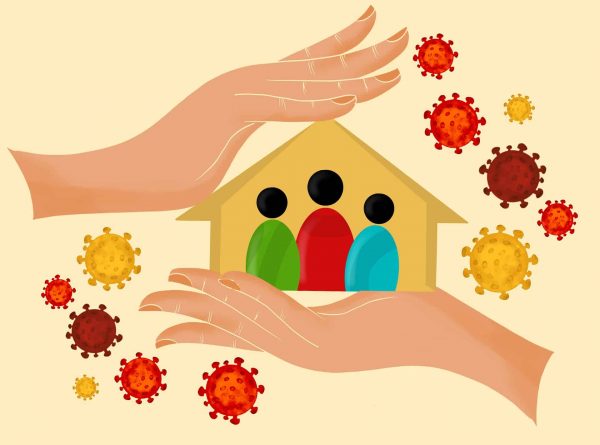Here we are, each of us, trying to do all we can to move our communities forward in a safe way. As employers, there are numerous guidelines from the State, health departments, OSHA, CDC and others to direct our paths back to “open for business” as we keep customers and our employees as safe as possible. Not just that, but there are our industry organizations, too, helping to provide proper insight to be followed, and any number of safety campaigns and pledges that a business can participate in, to demonstrate our will to get back to business in the best possible manner for everyone.
We started a “welcome back to work” kit for our employees who returned to work as our client businesses re-opened. It would include a letter explaining our expectations of safety for COVID, any expectations for their assigned worksite, and some hand sanitizer. It’s evolved now – we get this information out to all of our employees on assignment, as new ones have come on board. And now, of course, it includes reusable masks, too.
One other aspect I’ve been noodling on has been including an info sheet about safety and sanitization at home. We as business owners are expected to keep our employees safe while at work, but that’s only part of their day – and sometimes, unfortunately, what happens during off time can put staff at risk later. Case in point is COVID, where initially contracted outside of work, but then spread through shifts at the office or facility.
Which leads me to this informational letter to include in the newest revision of our “welcome to work” kit in the COVID era. Feel free to use it for yourself, too, as it really is about getting all people back to a level of operational safety, whether in business or community life.
Dear (Name of Employee):
We are excited to have you as part of our team! As you can see, the information in this packet is focused on keeping everyone safe during this COVID time. Other parts included relate specifically to expectations while at work. This piece, however, is to give some tips on keeping you safe when you return home from the public, including things that are largely understood to be proactive measures against COVID, and maybe a few that aren’t quite as well known. Having procedures like these helps to mitigate risks for your health as well as your family’s.
- Do not go out if you are experiencing any symptoms.
- Maintain proper social distancing and wear a mask.
- When returning home from being in the public, try not to touch anything. Remove your shoes. Leave your bag, keys, wallet or purse in a box at the entry of your home to ensure it is out of reach.
- Change your clothes and put them in the washer to be washed. Wash your exposed areas (hands, face/neck, arms, etc).
- Put on gloves and retrace your steps, cleaning all items and areas you might have touched: door handles, sink faucets, shower curtains, washing machine, etc. Clean the surfaces of your phone, glasses, wallet or purse too.
- Wipe down surfaces of items brought from your outing – could be groceries, PPE, boxes, as examples.
- Although it isn’t possible to do a complete disinfection, the purpose is to minimize the risk. Your plan doesn’t have to end here, though. Also think through what might happen in your daily home life if someone were to contract COVID. Here are some examples of steps to take to keep members of the household safe if someone is sick:
- Have a designated room where the individual can quarantine themselves. Ideally, this could be a bedroom with a bathroom.
- Deep clean the rest of the house once that person has isolated themselves.
- Identify the ONE person in the house who will tend to the sick house member. Minimize the risk by limiting to one caregiver.
- Have meals delivered to the door of the room where the individual is, and have them get it from there, if possible. Plates and utensils can be placed back in this spot (maybe have a box or tray?) for pick up once the meal has been finished. The caregiver should wear gloves to help protect from exposure.
- Maintaining 6 feet of distance is ideal, but should the caregiver need to give more hands-on attention, all precautions such as mask, gloves, sanitization and washing should be followed frequently. That includes clothes, as mentioned above.
We want to make sure members of our team are as safe as possible throughout this time. Being diligent and prepared at home is a critical part of the safety of the team at work. We hope this information has been helpful, and if you have additional suggestions to add, please let us know.
Stay well,
West Sound Workforce
Continuing to revise and add to safety information provided to employees about COVID shows that the business cares about their employees. Helping to provide ideas on how to enhance their own safety while on their own time shows that each person holds some accountability in their health, and that it could impact the health of others while at work. All in all, efforts to get back to some aspects of “normal life” is something we all have responsibility to do.

